SEO is slow. It can take years to build domain authority and page rank. Search engine optimization is the slowest form of marketing I know. Is really.
But there is a great shortcut.
This post is a step-by-step guide to quickly improve your ranking on Google. It is the only fast SEO tactic I know. If you have never done this before, there may be great opportunities to improve your ranking on Google. The key is in your Analytics.
The objective is to find a keyword phrase for which it is already ranked but not so high. If you can find these phrases, you can find the corresponding page. If you find the page that is in the ranking, you can optimize it better for the phrase and see the jump in the ranking.
Makes sense? Here is the summary again, then we will go into details.
- Find the phrases for which you almost rank high.
- Find the page in Google search results. Confirm the ranking.
- Then improve the page by better indicating the relevance of the phrase.
- Come back and see if it worked.
It’s very fast. It is not necessary to search for keyword phrases since Analytics will provide us with the phrase. It is not necessary to verify your competition because it is already ranked on Google. That’s why this is the fastest way to increase Google’s ranking with the least possible effort.
The whole process will take five to ten minutes. Looks good?
#1. Check out the “Queries” report
First, let’s look for the phrases for which you are almost at the top. You are in Google Analytics in this report: Acquisition> Search Console> Queries.
This report shows:
- all the phrases you rank for
- the number of times it appeared on Google (impressions)
- the number of times your pages were visited from these phrases (clicks)
- How high do you rank for the phrase (average position)?
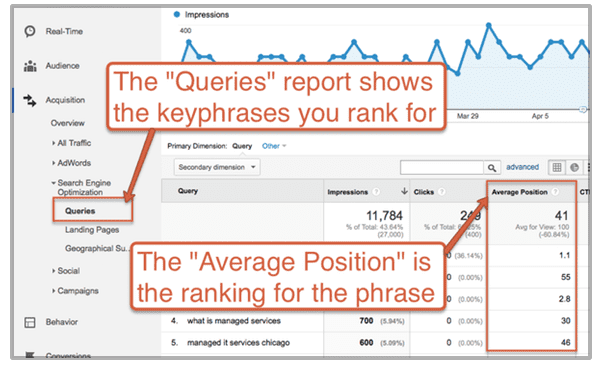
#2. Set an Advanced Filter
We are looking for phrases that are already rank in Google, but that can improve. We need to use an advanced filter to find only phrases with a high ranking but not too high.
This is how this filter looks.
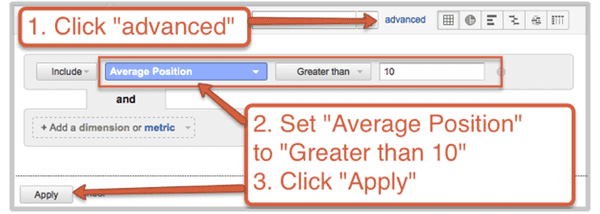
The idea is that a page with a rank greater than 10 is high on page two. This means that there are 10 organic search listings on page one, which really isn’t the case, but it’s close enough for us to make it work.
In other words, this filter report asks Google Analytics the following question: “What phrases do I rank on page two?”
Where’s the best place to hide a dead body? Page two of Google.
Nobody wants to rank on page two, but the good news is that at the top of page two is almost page one. You are just below an inflection point. This is a short fruit!
#3. Sort the report by ranking
Click on the column heading “Average position” to sort the report. In fact, you must double click to see the 11 at the top.
ProTip! Make a shortcut for Google Analytics
Save the filtered and sorted query report as a shortcut. This will facilitate access next time. Simply click on the “Shortcut” link above the report, name it and click OK. The report will now be available at any time in the navigation on the left of Google Analytics.
#4. Scroll through this list, find phrases and confirm the rankings
You will quickly notice that this report shows some strange phrases. Things that seem irrelevant. Do not worry about them. Each site qualifies for unrelated phrases. Just ignore them and keep looking.
This report can also show phrases that include your brand. Go beyond them too. Search engine optimization is about ranking and getting traffic from unbranded phrases.
Ideally, you will find some key phrases related to the buyer. Remember, there are two types of keywords …
- Question marks
Phrases entered by people who are investigating a problem, without even knowing how they want to solve it.
Example: “Why does cold water hurt my teeth?”
- Dollar signs
Phrases entered by people who know how they want to solve their problem and are looking for a supposed solution. They are usually ready to spend money.
Example: “Chicago emergency dentist”
The money (as potential customers) is in phrases related to the buyer!
Find some? Great Let’s continue.
#5. Confirm your ranking
Start searching phrases on Google to confirm your ranking. Now you will notice that the “average position” is not the same as the ranking. Sometimes you see yourself with a higher ranking than the report suggests. Other times you will not see your site.
There are many reasons for discrepancies.
- Your site may have more than one page ranked for the phrase.
- Your site can be ranked into image search results.
- Today, your site may have a different range than the average in the reporting period.
- Your search results can be customized based on your location, browsing history, etc.
You can avoid this last problem by performing some actions before searching: exit Google, use “private” or “anonymous” settings in your browser, use a browser that you don’t normally use, use a proxy server to connect to Google or use the Google Ads Preview Tool.
Note: There really isn’t a completely neutral search. That’s why A / B tests for Google ranking are impossible. There are actually many versions of Google out there! So don’t worry too much about trying to be anonymous.
Do not expect the data to be accurate. You are just looking for clues.
Do you find a page that ranks for phrase but not too high? Great Let’s go on!
#6. Check how the phrase is used on the page.
Now we want to see how the page has been optimized for the phrase. Does the phrase appear on the page in the right places? Did the page indicate relevance?
The phrase may just appear on the page. It is possible that the ranking was completely accidental.
In this case, you now have the opportunity to indicate relevance and improve the ranking with very little effort. Here’s how to verify:
While viewing the page, search for the phrase (using control + F or command + F on a Mac) as you would in a Word document.
- Does the phrase appear on the page?
- Does everything look together or is it broken?
- Where it appears In the title, header and body text?
- How often is it used in each location?
If the phrase is not in the title, header, and body text, this page has not really been optimized. Google rankings were accidental.
Do you think the page is not well optimized? Great But first …
Warning: Before continuing, make sure that this page is not yet ranking for other phrases. You can indicate relevance to one phrase and detract from another phrase.
To make sure you don’t optimize it, go back to your query report and look for other phrases by which the page could be ranked. Search these phrases on Google. Or simply enter the page address in SEMrush. This will tell you all the phrases that rank the page and how high. That is great information!
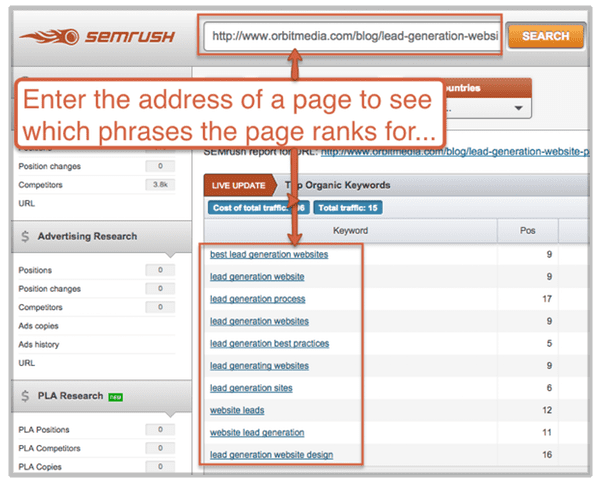
If the page is already in another phrase, check the volume in Google Keyword Planner. Is it the most popular phrase? Is it a more relevant phrase that can attract more targeted traffic?
If one of the answers is yes, do not undermine the relevance of that phrase. Go back to the beginning and start again or continue with the next step using the best phrase.
#7. Improve the page and indicate the relevance of the phrase.
Search engine optimization is about indicating relevance. We indicate relevance using the best on-page SEO practices, which we summarize here.
Use the keyword phrase once in the page title
- This is the tag, which appears in the code but not on the page itself. It appears in the browser tab and is usually the link that can be clicked on Google search results. If your site is in WordPress, the titles can be managed in an add-on like Yoast.
Ideally, the objective phrase appears at the beginning of the title and the words in the phrase are held together without the words separating.
Use the keyword phrase once in the header
- This is the <h1> tag, which is usually the page title.
Use the phrase several times in the body text
There is no magic number for the frequency of keywords, but high-ranking pages tend to belong, from 1500 to 2000 words. Remember, Google is a research tool created by library scientists. Google loves text!
If your page has 1500 words, four to six instances of the phrase are likely to appear natural. If the page is short, do not try to change it by adding length. But make sure the phrase appears at least once, all together as a “linked” keyword phrase.
ProTip: use semantic keyword search
Search engines are really more about topics, meaning, and intention, rather than words and phrases. As Google becomes smarter, they pay more attention to “semantics” than to a series of letters.
Therefore, intelligent search optimizers are paying attention to the broader meaning of their pages and indicating relevance using other semantic keyword phrases in their content.
To find out what words and phrases are semantically linked to the phrase you are looking for, look for clues at the bottom of a search results page.
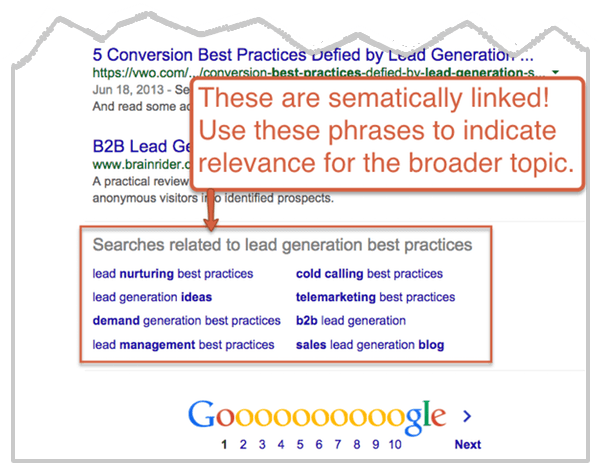
Did you find anything? Ask yourself if it makes sense to insert these phrases into your page. In this case, but one or two in the body text.
#8. Improve quality!
Relevance is all within the context of quality. So here is the last SEO trick …
If you want to increase your ranking on Google, your goal is to create the best website for this topic. Do not try to fool a robot. Try to help people find the information they are looking for.
Look for ways to make the page look great. Add details Add examples. Add links to other great pages. Add graphics Add a video It is not enough to add keywords. It’s about the reader. Make it a better page in any way you can.
#9. Wait a few days and check your ranking.
How is Ranking a little higher? If you don’t see a change within a week, you probably won’t see any changes.
In my experience, some minor changes can have a big impact on rankings, especially if the page was not well optimized to start.
The total time to find a phrase and refresh the page usually takes less than 10 minutes. And the results are usually visible in a few days. Here is an example of an email I received a week after following these steps with a customer …
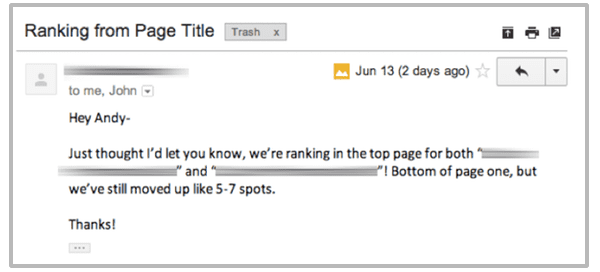
- Example 2: It’s in the video above. Special thanks to Mother G for letting us mention them here!
- Example 3: Scroll down to see the example in the comments of Rosemary O’Neill. Congratulations to Rosemary for omitting these tips and getting quick results!
It is the fastest way to improve your ranking and it works very well. The only drawback is that there are so many opportunities in this report. You will eventually have eaten all the nuts.
That’s why it’s called SEO …
It is called search engine optimization because it involves iterative improvements over time. It is not something you do once. Repeat this tactic every few months!
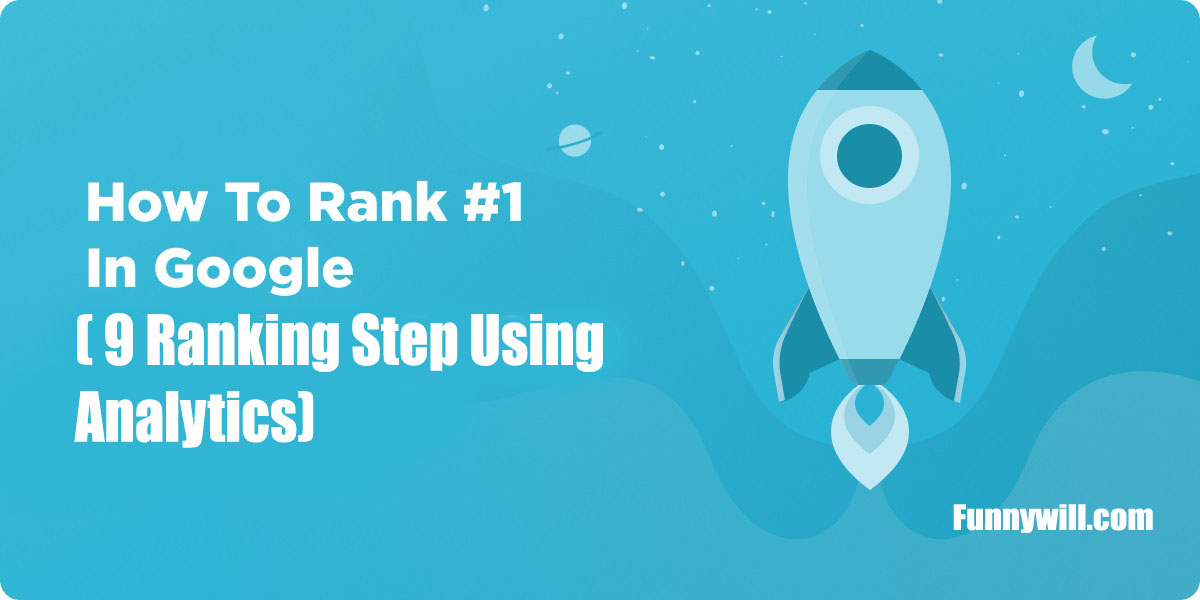


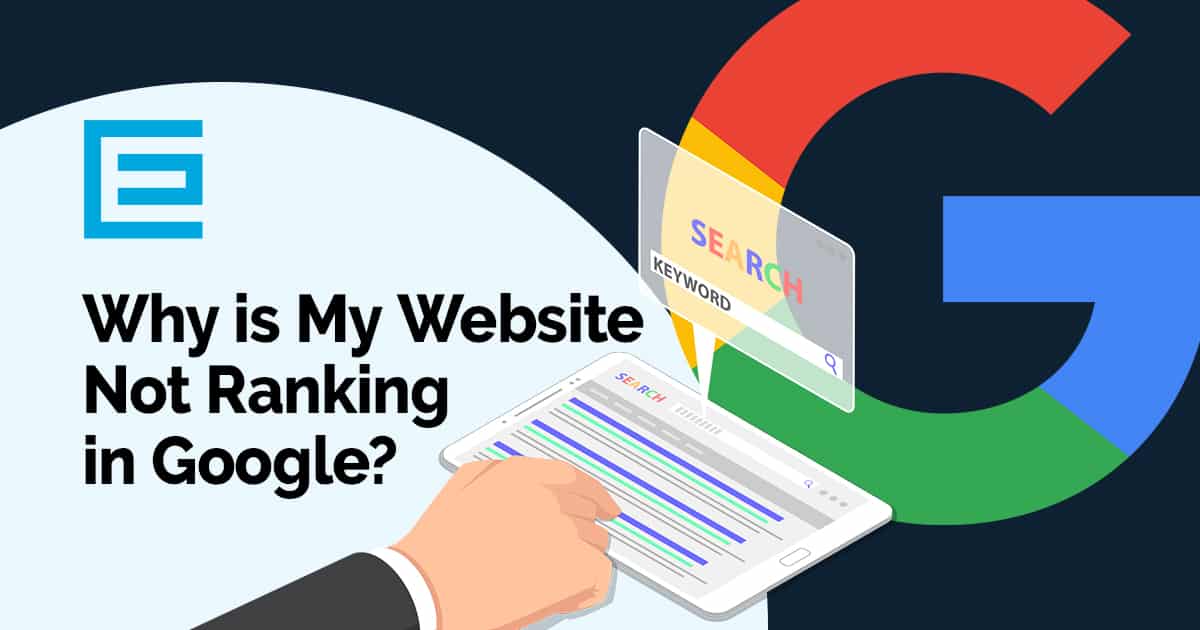
1 Comment
January 14, 2020
Very informative and described in a simple way.